
Werner Herzog is a German filmmaker, actor, opera director, and author. Regarded as a pioneer of New German Cinema, his films often feature ambitious protagonists with impossible dreams, people with unusual talents in obscure fields, or individuals in conflict with nature. His style involves avoiding storyboards, emphasizing improvisation, and placing his cast and crew into real situations mirroring those in the film they are working on.

The Enigma of Kaspar Hauser is a 1974 West German drama film written and directed by Werner Herzog and starring Bruno S. and Walter Ladengast. The film closely follows the real story of foundling Kaspar Hauser, using the text of actual letters found with Hauser.

Aguirre, the Wrath of God is a 1972 epic historical drama film produced, written and directed by Werner Herzog. Klaus Kinski stars in the title role of Spanish soldier Lope de Aguirre, who leads a group of conquistadores down the Amazon River in South America in search of the legendary city of gold, El Dorado. The accompanying soundtrack was composed and performed by kosmische musik band Popol Vuh. The film is an international co-production between West Germany and Mexico.

Klaus Kinski was a German actor. Equally renowned for his intense performance style and notorious for his volatile personality, he appeared in over 130 film roles in a career that spanned 40 years, from 1948 to 1988. He is best known for starring in five films directed by Werner Herzog from 1972 to 1987, who would later chronicle their tumultuous relationship in the documentary My Best Fiend.

Even Dwarfs Started Small is a 1970 West German absurdist comedy-drama film written, produced, and directed by Werner Herzog.
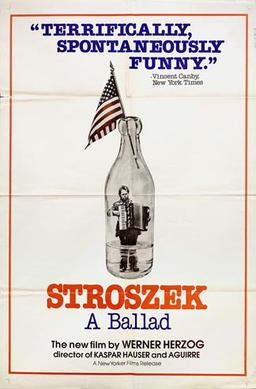
Stroszek is a 1977 West German tragicomedy film directed by Werner Herzog and starring Bruno S., Eva Mattes, and Clemens Scheitz. Written specifically for Bruno S., the film was shot in Plainfield, Wisconsin, and North Carolina. Most of the lead roles are played by inexperienced actors.

Nosferatu the Vampyre is a 1979 gothic horror film written and directed by Werner Herzog. It is set primarily in 19th-century Wismar, Germany and Transylvania, and was conceived as a stylistic adaptation of Bram Stoker's 1897 novel Dracula, taking the title, setting and titular character's design from F. W. Murnau's 1922 film Nosferatu: A Symphony of Horror. The picture stars Klaus Kinski as Count Dracula, Isabelle Adjani as Lucy Harker, Bruno Ganz as Jonathan Harker, and French artist-writer Roland Topor as Renfield. There are two different versions of the film, one in which the actors speak English, and one in which they speak German.
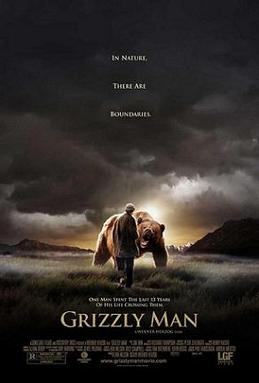
Grizzly Man is a 2005 American documentary film by German director Werner Herzog. It chronicles the life and death of bear enthusiast and conservationist Timothy Treadwell and his girlfriend Amie Huguenard at Katmai National Park, Alaska. The film includes some of Treadwell's own footage of his interactions with brown bears before 2003, and of interviews with people who knew or were involved with Treadwell, in addition to professionals who deal with wild bears.
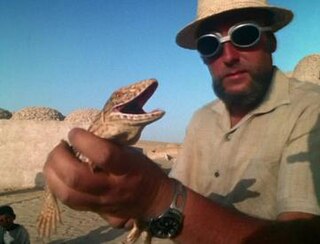
Fata Morgana is a 1971 film by Werner Herzog, shot in 1968 and 1969, which captures mirages in the Sahara and Sahel deserts. Herzog also wrote the narration by Lotte H. Eisner, which recounts the Mayan creation myth, the Popol Vuh.

Werner Herzog Eats His Shoe is a short documentary film directed by Les Blank in 1980, that depicts director Werner Herzog living up to his alleged vow to eat his shoe if Errol Morris ever completed the film Gates of Heaven.
Bells from the Deep: Faith and Superstition in Russia is a 1993 documentary film written and directed by Werner Herzog, produced by Werner Herzog Filmproduktion.

The Great Ecstasy of Woodcarver Steiner is a 1974 documentary film by German filmmaker Werner Herzog. It is about Walter Steiner, a celebrated ski jumper of his era who worked as a carpenter for his full-time occupation. Showcased is Steiner's quest for a world record in ski flying, as well as the dangers involved in the sport. Herzog has considered it one of his "most important films."
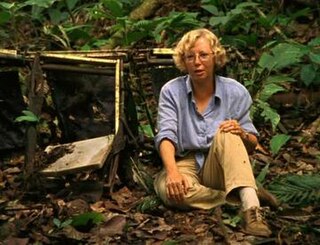
Wings of Hope is a 1998 made-for-TV documentary directed by Werner Herzog. The film explores the story of Juliane Koepcke, a German Peruvian woman who was the sole survivor of Peruvian flight LANSA Flight 508 following its mid-air disintegration after a lightning strike in 1971. Herzog was inspired to make this film since he had narrowly avoided taking the same flight while he was location scouting for Aguirre, the Wrath of God; his reservation had been canceled due to a last minute change in itinerary.

Herakles (Heracles) is a 1962 short film and the first film by the German director Werner Herzog, then 19 years old.
Gesualdo: Death for Five Voices is a 1995 film by German director Werner Herzog filmed for ZDF television. The film explores the music of Carlo Gesualdo and the legends surrounding Gesualdo's personality, his cursed castle, and his murder of his wife and her lover. Between narration and interviews, several of Gesualdo's madrigals are performed. Herzog calls Death for Five Voices "one of the films closest to my heart."
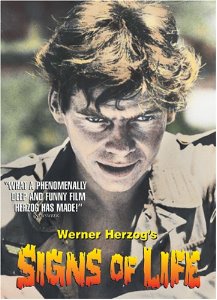
Signs of Life is a 1968 feature film written, directed, and produced by Werner Herzog. It was his first feature film, and his first major commercial and critical success. The story is roughly based on the short story "Der Tolle Invalide auf dem Fort Ratonneau" by Achim von Arnim.
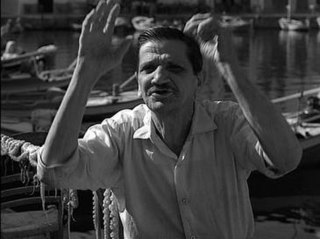
Last Words is a 1968 short film by Werner Herzog shot in Crete and on the island of Spinalonga. The film was shot in two days during the filming of Herzog's feature Signs of Life, and edited in one day.
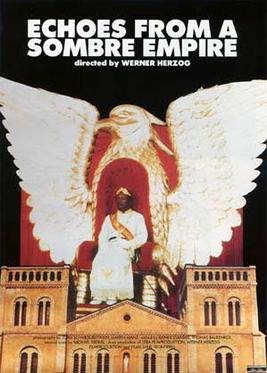
Echoes From a Sombre Empire is a documentary film by Werner Herzog about Jean-Bédel Bokassa.

Ballad of the Little Soldier is a 1984 documentary film directed by Werner Herzog and Denis Reichle about child soldiers in Nicaragua. The film focuses on a group of Miskito Indians who used children soldiers in their resistance against the Sandinistas.

Scream of Stone is a 1991 film directed by Werner Herzog about a climbing expedition on Cerro Torre. The film was shot on location at Cerro Torre, with several scenes filmed close to the summit.

















